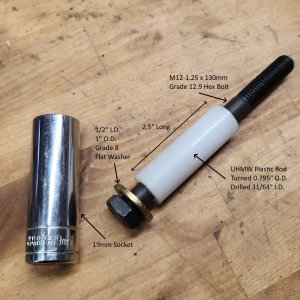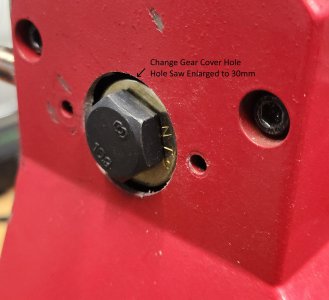This is the my first time using an MT3-tapered chuck in my mini-lathe, it's an ER20 collet chuck.
I have a 12mm x 120mm drawbar with a washer set in the lathe spindle through-hole in order to secure the ER collet chuck, what I'm not sure about is how much torque I should apply to the drawbar? Without a torque wrench, I found I could easily tighten it enough to where I have to rap the loosened drawbar pretty stoutly to get the chuck to release from the lathe spindle.
Thanks for the help!
I have a 12mm x 120mm drawbar with a washer set in the lathe spindle through-hole in order to secure the ER collet chuck, what I'm not sure about is how much torque I should apply to the drawbar? Without a torque wrench, I found I could easily tighten it enough to where I have to rap the loosened drawbar pretty stoutly to get the chuck to release from the lathe spindle.
Thanks for the help!



